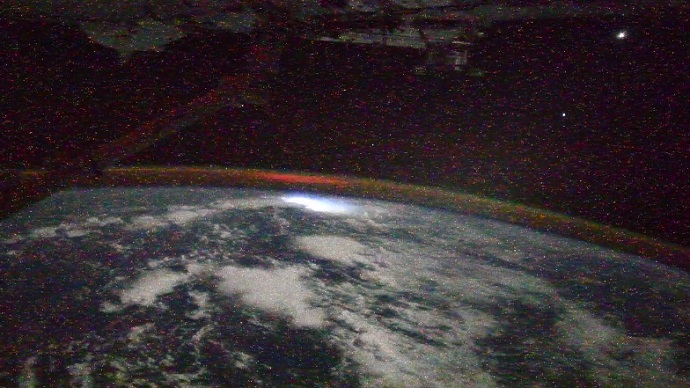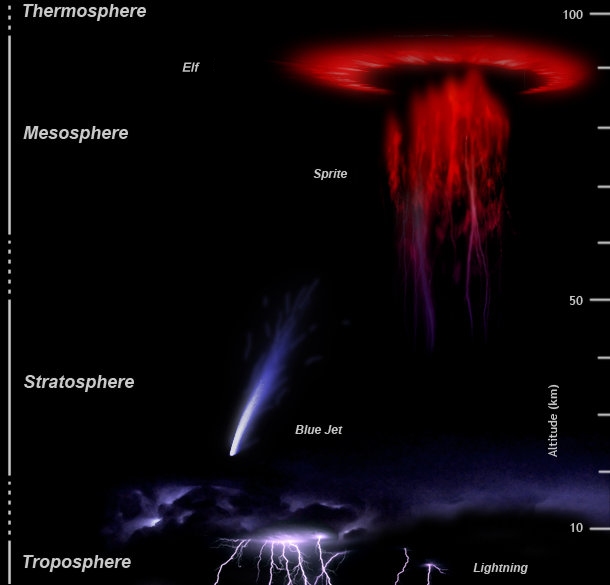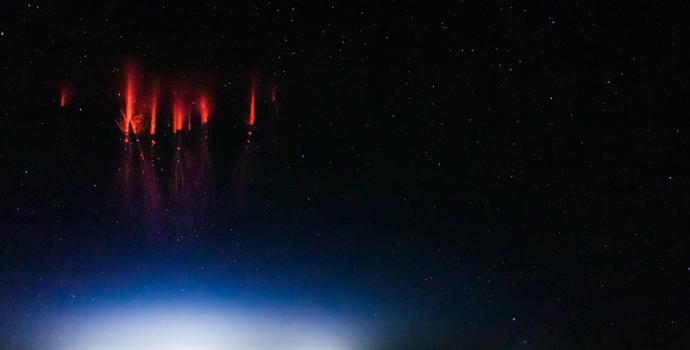European Space Agency astronaut, Andreas Mogensen, recently arrived at the International Space Station equipped with a new camera – and with it he will complete the experiment that the first Israeli astronaut Ilan Ramon started in 2003 and the second Israeli astronaut Eitan Stibbe continued last year. Denmark's Mogensen will photograph lightning storms and luminous phenomena in the high atmosphere (between 50 and 95 km above sea level), also known as "sprites" and "elves". The experiment is a continuation of the ILAN-ES experiment performed by Stibbe and his colleagues on the AX-1 mission, which itself was a direct continuation of the MEIDEX experiment conducted by Ramon and his fellow crewmembers of Space Shuttle Columbia in 2003.
"This is a variation on the experiment Stibbe conducted last year, as part of the Rakia mission, which was itself a continuation of the night part of the MEIDEX experiment conducted by the late Ilan Ramon," explains Prof. Yoav Yair of Reichman University, who designed Stibbe's experiment and is now a partner in Mogensen's experiment. "The Danes have launched a much more sophisticated camera than what we had. Our Nikon camera captured 60 frames per second, called Davies, and it takes a thousand frames per second – a dizzying pace that will allow you to shoot sprites at unprecedented resolution. We had already managed to catch some sprites on the first try last week, but apparently there was a fault in the camera, and we didn't get the information we wanted. Our colleagues from Denmark solved the fault and uploaded new software definitions to the space station, so there is hope of getting new and improved images. Either way, this is the same methodology for predicting lightning storms around the world that we developed in 2003 for the MEIDEX experiment."

Sprites, elves and reverse lightning bolts
Sprites are electrical discharges that occur high above storm clouds at an altitude of between 50 and 90 km from sea level, when there is particularly strong lightning. And elves appear at altitudes of up to 100 kilometers. Apparently, the first person to see sprites was probably the German historian Johann Georg Astor in 1730, while trying to write a book on German geography. Astor climbed a very high mountain with his horse, looking down on a storm cloud. To his surprise, he saw lightning shoot from the cloud upwards, toward the sky instead of toward the ground. This phenomenon is now called "giant jets" and is part of the "family" of these phenomena.
The sprites themselves were first documented in 1989, when they were accidentally caught in a video by astronomers at the University of Minnesota. Although many sprites have since been documented from the ground, from air and from space, their nature remains quite elusive. Apparently, sprites are very different from lightning, are enormous in size and physically closer in nature to Aurora.
A lightning sprite is created when positively charged lightning at the top of the cloud (about 5% of all lightning) is released to the ground, while a negative charge is found in the central part of the cloud. As soon as the positive charge is released, a momentary, powerful electric field is created above the cloud, which ionizes and stimulates nitrogen molecules in the upper atmosphere – a process that emits photons of different wavelengths, red and blue flashes of light. Lightning sprites take only fractions of seconds, that is, they disappear long before you can blink, but they spread over an area of between 24 and 84 kilometers and resemble giant jellyfish or carrots and pillars. Elves are created similarly and last a similar blink of an eye, but spread through the Earth's atmosphere to a diameter of 320 kilometers – looking like a ring of gas on a stove or a donut of red light with a circular hole in the center.
European Space Agency astronaut Andreas Mogensen explains some of the phenomena he captured last time, in 2015.
"A new family of phenomena"
"We are trying to understand what this means about lightning storms," says Prof. Yair. "For example, is global warming encouraging the formation of sprites? Some of the fundamental questions of the phenomenon remain completely open. In fact, in 2015, the last time Andreas Mogensen was on the space station, we discovered in photographs that he had taken, a new family of phenomena called “blue corona discharges”. Unlike sprites and elves, which discharge very high in the mesosphere, blue lightning discharges very close to or within the clouds themselves. Since the discovery, dozens of papers have been published on the phenomenon, and the new Danish study will try to shed light on this blue lightning."
In 2019, the European Space Agency installed X-ray cameras and detectors aboard the International Space Station as part of the Atmosphere-Space Interactions Monitor (ASIM) project. The project allows researchers to compare the images taken by astronaut Mogensen to images taken at a slightly different angle from the spacecraft's deck.
"One of the things we tried to do in the ILAN-ES experiment in 2022 was to observe the phenomenon simultaneously from the ground and from space," says Prof. Yair. "To that end, we distributed dozens of cameras to schools in Israel and Africa, but we were unable to film the same phenomenon at the same time – when you see the sprites from space, you don't see them from the ground, and vice versa. The Danish experiment uses the photometric array aboard the station to cross-reference the data, hoping to gain a fuller understanding of this strange alien environment of the upper atmosphere."

Chart showing the variety of electrical phenomena in the Earth's upper atmosphere (excluding the Aurora). Credit: Abestrobi











